Chapter: 12th Physics : Electrostatics
Electric Field
Electric Field
The interaction between
two charges is determined by Coulomb’s law. How does the interaction itself
occur? Consider a point charge kept at a point in space. If another point
charge is placed at some distance from the first point charge, it experiences
either an attractive force or repulsive force. This is called ‘action at a
distance’. But how does the second charge know about existence of the first
charge which is located at some distance away from it? To answer this question,
Michael Faraday introduced the concept of field.
According to Faraday,
every charge in the universe creates an electric field in the surrounding
space, and if another charge is brought into its field, it will interact with
the electric field at that point and will experience a force. It may be
recalled that the interaction of two masses is similarly explained using the concept
of gravitational field (Refer unit 6, volume 2, XI physics). Both the electric
and gravitational forces are non-contact forces, hence the field concept is
required to explain action at a distance.
Consider a source point
charge q located at a point in space. Another point charge qo (test
charge) is placed at some point P which is at a distance r from the charge q.
The electrostatic force experienced by the charge qo due to q is
given by Coulomb’s law.

The charge q creates an
electric field in the surrounding space. The electric field at the point P at a
distance r from the point charge q is the force experienced by a unit charge
and is given by

Here ^r is the
unit vector pointing from q to the point of interest P. The electric field is a
vector quantity and its SI unit is Newton per Coulomb (NC-1).
Important aspects of
Electric field
(i) If the charge q
is positive then the electric field points away from the source charge and if q
is negative, the electric field points towards the source charge q. This
is shown in the Figure 1.4.
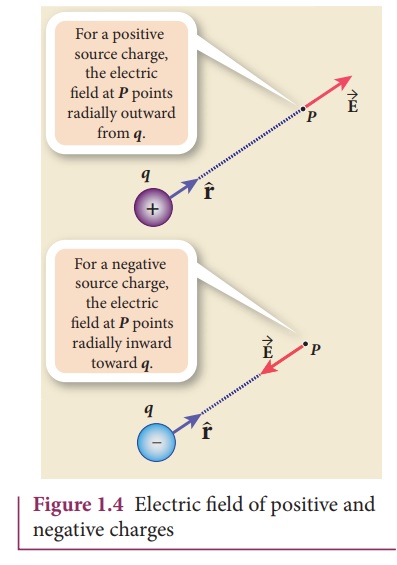
(ii) If the electric
field at a point P is ![]() , then the force experienced by the test
charge qo placed at the point P is
, then the force experienced by the test
charge qo placed at the point P is

This is Coulomb’s law in
terms of electric field. This is shown in Figure 1.5
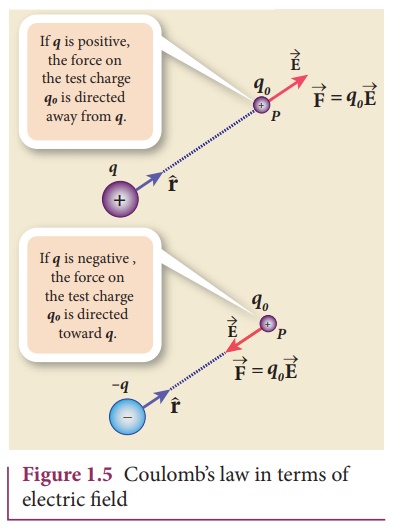
(iii) The equation (1.4)
implies that the electric field is independent of the test charge qo
and it depends only on the source charge q.
(iv) Since the electric
field is a vector quantity, at every point in space, this field has unique
direction and magnitude as shown in Figures 1.6(a) and (b). From equation
(1.4), we can infer that as distance increases, the electric field decreases in
magnitude.
Note that in Figures 1.6
(a) and (b) the length of the electric field vector is shown for three
different points. The strength or magnitude of the electric field at point P is
stronger than at the points Q and R because the point P is closer to the source
charge.
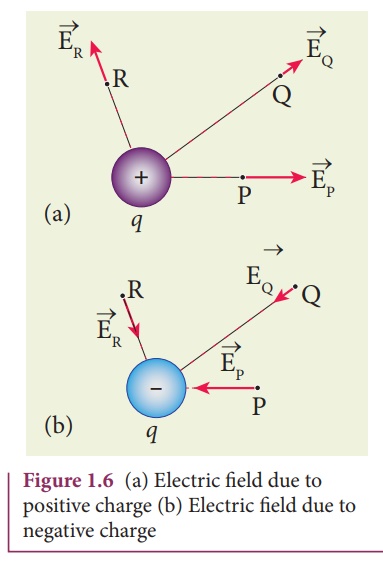
(v) In the definition of
electric field, it is assumed that the test charge q0 is
taken sufficiently small, so that bringing this test charge will not move the
source charge. In other words, the test charge is made sufficiently small such
that it will not modify the electric field of the source charge.
(vi) The expression
(1.4) is valid only for point charges. For continuous and finite size charge
distributions, integration techniques must be used These will be explained
later in the same section. However, this expression can be used as an
approximation for a finite-sized charge if the test point is very far away from
the finite sized source charge. Note that we similarly treat the Earth as a
point mass when we calculate the gravitational field of the Sun on the Earth
(refer unit 6, volume 2, XI physics).
(vii) There are two
kinds of the electric field: uniform (constant) electric field and non-uniform
electric field. Uniform electric field will have the same direction and
constant magnitude at all points in space. Non-uniform electric field will have
different directions or different magnitudes or both at different points in
space. The electric field created by a point charge is basically a non uniform
electric field. This non-uniformity arises, both in direction and magnitude,
with the direction being radially outward (or inward) and the magnitude changes
as distance increases. These are shown in Figure 1.7.
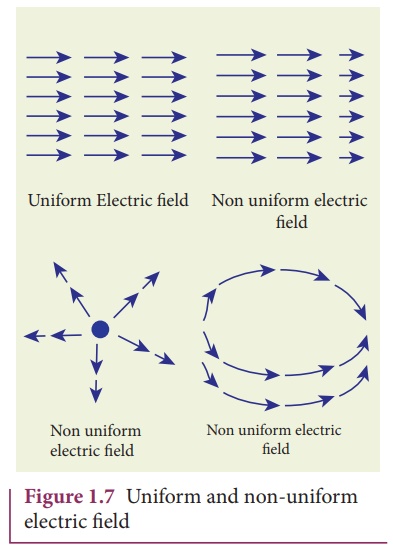
EXAMPLE 1.6
Calculate the electric field at points P, Q for the
following two cases, as shown in the figure.
(a) A positive point
charge +1 µC is placed at the origin
(b) A negative point
charge -2 µC is placed at the origin
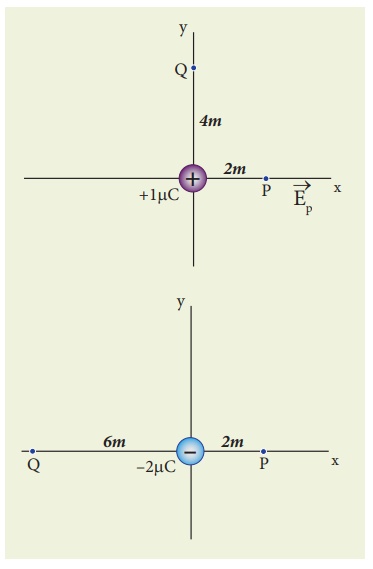
Solution
Case (a)
The magnitude of the
electric field at point P is

Since the source charge
is positive, the electric field points away from the charge. So the electric
field at the point P is given by
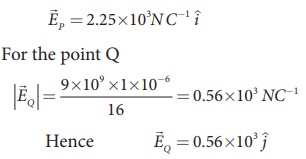
Case (b)
The magnitude of the
electric field at point P

Since the source charge
is negative, the electric field points towards the charge. So the electric
field at the point P is given by

At the point Q the
electric field is directed along the positive x-axis.
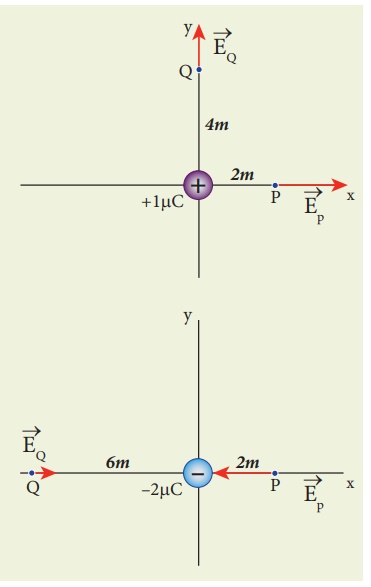
Related Topics